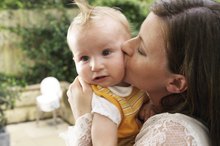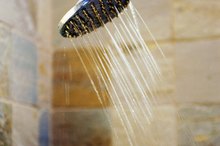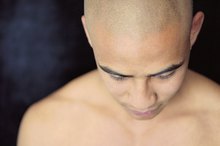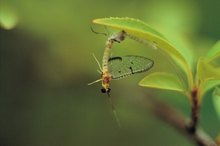What does fact checked mean?
At Healthfully, we strive to deliver objective content that is accurate and up-to-date. Our team periodically reviews articles in order to ensure content quality. The sources cited below consist of evidence from peer-reviewed journals, prominent medical organizations, academic associations, and government data.
The information contained on this site is for informational purposes only, and should not be used as a substitute for the advice of a professional health care provider. Please check with the appropriate physician regarding health questions and concerns. Although we strive to deliver accurate and up-to-date information, no guarantee to that effect is made.
Does Bug Spray Kill Lice?
At first, it seems like a quick and easy fix for head lice: Just zap them with a generous dose of bug spray. But will bug spray actually kill head lice? And could it be dangerous for the person being sprayed? The answer is probably--many bug sprays are basically poison that must be used carefully and according to directions. But what's for certain is that bug spray can be dangerous, and health experts recommend safer and more conventional ways to treat head lice.
Bug Spray
Doctors warn against using products for anything other than their intended purpose. In addition, the National Pediculosis Association, a nonprofit organization that promotes education about head lice, advocates against using chemical sprays to kill head lice.
The most common bug sprays are approved for killing or repelling outdoor pests such as mosquitoes, gnats, flies, ticks and chiggers; other sprays kill garden bugs or hornets and wasps. Biopesticides are bug sprays made from naturally derived substances, such as oil of lemon, eucalyptus and oil of citronella.
- Doctors warn against using products for anything other than their intended purpose.
- In addition, the National Pediculosis Association, a nonprofit organization that promotes education about head lice, advocates against using chemical sprays to kill head lice.
Treating Head Lice Yourself
The Effects of Dandruff Shampoo on Lice
Learn More
According to the Mayo Clinic, the first option in destroying head lice should be a special over-the-counter shampoo 1. The most popular are pyrethrin, sold under the brand name Rid, and permethrin, sold under the brand name Nix. Mayo Clinic doctors advise that people who use these should follow the directions exactly 1.
Prescription Treatment
Sometimes over-the-counter medicine isn't strong enough. In these cases, doctors prescribe medication such as malathion (Ovide), which is applied to the hair and scalp. Two cautions: It is flammable, and women who are pregnant or breast-feeding must make sure their doctors know. Another prescription treatment is lindane, which comes in cream, lotion and shampoo forms. Again, women who are pregnant or breast-feeding may not be able to use it. Benzyl alcohol lotion is a more recently approved treatment that should not be given to children younger than 6 months, as the effects on them can be fatal, according to the Mayo Clinic 1.
- Sometimes over-the-counter medicine isn't strong enough.
- Two cautions: It is flammable, and women who are pregnant or breast-feeding must make sure their doctors know.
Non-Chemical Treatment
Borax Treatment for Scabies
Learn More
You don't need special shampoos or toxic creams to rid yourself or your children of head lice. The National Pediculosis Association recommends removing lice and nits (eggs) by hand, saying it is the only remedy that is completely safe.
Related Articles
References
- Mayo Clinic
- Environmental Protection Agency
- Headlice.org
- InformedHealth.org [Internet]. Cologne, Germany: Institute for Quality and Efficiency in Health Care (IQWiG); 2006-. Head lice: Overview. 2008 Mar 5 [Updated 2018 Dec 13].Available from: https://www.ncbi.nlm.nih.gov/books/NBK279329/
- Rassami W, Soonwera M. Epidemiology of pediculosis capitis among schoolchildren in the eastern area of Bangkok, Thailand. Asian Pac J Trop Biomed. 2012;2(11):901–904. doi:10.1016/S2221-1691(12)60250-0
- van der Wouden JC, Klootwijk T, Le Cleach L, et al. Interventions for treating head lice. Cochrane Database Syst Rev. 2018;2018(5):CD009321. Published 2018 May 22. doi:10.1002/14651858.CD009321.pub2
- Bin Saif GA, Ericson ME, Yosipovitch G. The itchy scalp--scratching for an explanation. Exp Dermatol. 2011;20(12):959–968. doi:10.1111/j.1600-0625.2011.01389.x
- Head lice infestations: A clinical update. Paediatr Child Health. 2004;9(9):647–657. doi:10.1093/pch/9.9.647
- Izri A, Chosidow O. Efficacy of machine laundering to eradicate head lice: recommendations to decontaminate washable clothes, linens, and fomites. Clin Infect Dis. 2006;42(2):e9–e10. doi:10.1086/499105
- Değerli S, Malatyalı E, Mumcuoğlu KY. Head lice prevalence and associated factors in two boarding schools in Sivas. Turkiye Parazitol Derg. 2013;37(1):32–35. doi:10.5152/tpd.2013.08
- Greive KA, Barnes TM. In vitro comparison of four treatments which discourage infestation by head lice. Parasitol Res. 2012;110(5):1695–1699. doi:10.1007/s00436-011-2687-7
- Devore CD, Schutze GE. Head lice. Pediatrics. 2015;135(5):e1355-65.
- Devore CD, Schutze GE; Council on School Health and Committee on Infectious Diseases, American Academy of Pediatrics. Head lice. Pediatrics. 2015 May;135(5):e1355-65. doi:10.1542/peds.2015-0746
Writer Bio
John Zaremba began writing professionally in 1997. He has worked at some of the country's finest small daily newspapers, including "The Beacon News" and "The Patriot Ledger." Zaremba is a graduate of the University of Illinois.









